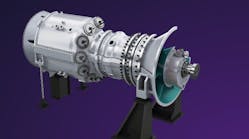Port of Long Beach gets $30.1 million in federal grant for Electrification, Efficiency
The Port of Long Beach in California has qualified for a $30.1 million grant from the U.S. Department of Transportation that will support its transition to zero-emissions cargo handling equipment from diesel-powered machinery.
As part of the new clean air project, the port will replace diesel yard tractors at Long Beach Container Terminal (LBCT) with approximately 60 human-operated electric yard tractors and will also deploy electric equipment charging stations with energy efficiency-enhancing software.
Installation of software equipment to streamline the cargo-handling operations within the terminal as well as training of operators and maintenance personnel will be a part of the project, which is being funded under the 2022 Port Infrastructure Development Program, administered by the U.S. Maritime Administration.
“This project is a critical step along our path toward zero emissions, will support good-paying jobs, and reduce climate and air-quality impacts on nearby communities.” Mario Cordero, Executive Director of the Port of Long Beach, said. “It is everything we strive for as the nation’s most sustainable seaport – moving cargo in a way that protects the health of our residents while ensuring our operations can continue to grow and support the economy.”
More on the Port of Long Beach Decarbonization projects
SSA Marine completes Gantry Crane Electrification at PLBT
Port starts construction on $12.2M Microgrid for Control and Command Center
The Port of Long Beach aims to convert all its cargo-handling equipment into a zero-emissions fleet by 2030 and have a zero-emissions drayage truck fleet by 2035.
LBCT can move 3.3 million cargo container units annually – more than most U.S. ports – and has the largest fleet of electric-powered cargo-handling equipment across the country.





